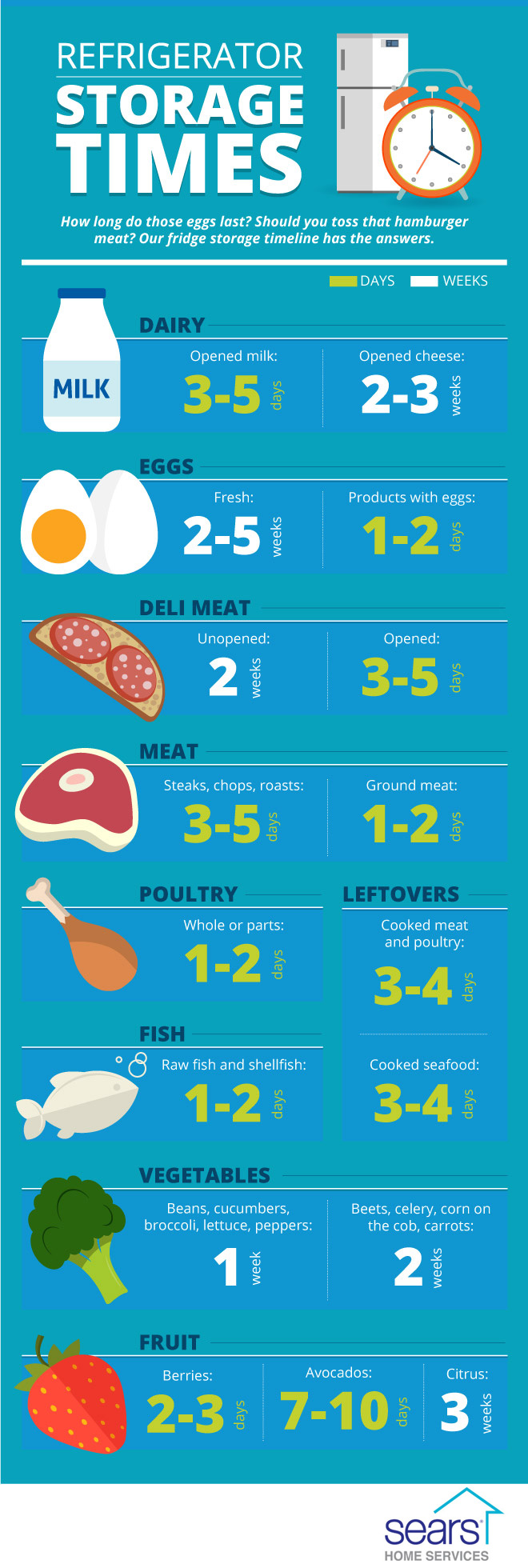Table of Contents
Food Storage Guidelines: How Long Can You Keep Food in the Fridge?
Stay informed about food safety with our comprehensive food storage guidelines, covering everything from dairy to meat to vegetables. Learn how long you can keep common refrigerated items fresh and get tips on maximizing the shelf life of your groceries. Plus, discover expert advice on organizing your fridge effectively to prevent food loss and ensure optimal freshness throughout the week.
KEY TAKEAWAYS
- Knowing the refrigerator storage times for various food items helps you determine when it’s time to consume or discard them.
- Maintaining proper fridge and freezer temperatures, storing foods in appropriate compartments, using airtight containers for leftovers, and avoiding overcrowding ensures optimal air circulation all help keep food fresh longer.
- By planning ahead for the week and organizing the fridge effectively, individuals can prevent food loss and ensure they consume items before they spoil, reducing waste and saving money.
Wondering if those leftovers are still good? What about that meat? Or milk? Our infographic breaks down the shelf life of common refrigerated items and offers up tips for keeping food fresh.
Because sell-by dates often aren't reliable indicators of when something has gone bad, it can be difficult to know how long is too long when it comes to an item’s shelf life. These need-to-know food storage guidelines will help keep you healthy and your fridge fresh.

Tips to keep food fresh longer
Follow this expert advice to help keep food fresh for longer in your fridge:
- Keep your fridge temp at or below 40°F, and set your freezer to 0ºF.
- Don’t slice foods until you’re ready to eat them.
- Store leafy vegetables with humidity control set on high.
- Store fruits with humidity controls set on low.
- Don’t store meats, dairy, fruits and vegetables in the same crisper.
- Don’t put easily perishable items in the fridge door, where the temp is warmer.
- Store leftovers in airtight containers.
- Avoid overcrowding, as this can block cold air circulation and cause warm spots.
Be sure to plan ahead for the week to prevent food loss, and don’t forget to organize your fridge in the most effective way.
Refrigerator Storage Times
How long do those eggs last? Should you toss that hamburger meat? Our fridge storage timeline has the answers.
Dairy
Opened Milk: 3-5 days
Opened Cheese: 2-3 weeks
Eggs
Fresh: 2-5 weeks
Products with eggs: 1-2 days
Deli Meat
Unopened: 2 weeks
Opened: 3-5 days
Meat
Steaks, chops, roasts: 3-5 days
Ground meat: 1-2 days
Poultry
Whole or parts: 1-2 days
Leftover cooked meat and poultry: 3-4 days
Fish
Raw fish and shellfish: 1-2 days
Leftover cooked seafood: 3-4 days
Vegetables
Beans, cucumbers, broccoli, lettuce, peppers: 1 week
Beets, celery, corn on the cob, carrots: 2 weeks
Fruit
Berries: 2-3 days
Avocados: 7-10 days
Citrus: 3 weeks
Always stay safe when handling food. When in doubt, throw it out.
Schedule refrigerator maintenance now!
Extend the lifespan of your refrigerator and prevent unexpected and costly breakdowns with our routine maintenance service.
Was this information helpful?
Schedule refrigerator maintenance now!
Maintain Refrigerator Resources
Learn how a refrigerator water filter works and why it is essential to your health.
Learn how a condenser works to help keep the refrigerator cool.
Discover the best brand of refrigerator for your home at Sears Home Services.
Prevent dust and debris from compromising your Whirlpool refrigerator's efficiency. Learn how to clean refrigerator coils in 7 easy steps to enhance performance, extend appliance lifespan, and reduce energy costs.
Glossary Terms
Refrigerant is a chemical compound used in HVAC systems and refrigerators to absorb heat from the environment by cycling through states of evaporation and condensation, enabling the cooling process through its cycle of evaporation and condensation.
R-12 refrigerant, also known as Freon-12, is a chlorofluorocarbon (CFC) compound that was once widely used in air conditioning systems, refrigerators, and aerosol propellants before its phase-out due to environmental concerns.
CFC certification refers to the credentialing process that qualifies HVAC technicians to handle chlorofluorocarbons (CFCs) and other refrigerants in a manner that complies with environmental regulations. It is essential for professionals who install, maintain, or repair HVAC systems and refrigeration equipment.
A refrigerator thermostat is a device within a refrigerator that regulates its temperature by turning the cooling system on and off based on the interior temperature compared to the set desired temperature.
Common Repair Refrigerator Symptoms
The most common reasons your Whirlpool refrigerator won't make ice are a locked compressor, old water filter or a malfunctioning dispenser.
The most common reasons your Whirlpool refrigerator water is not cold are a compromised water reservoir, failed door insulation, or a malfunctioning dispenser.
The most common reasons your Whirlpool refrigerator water filter is not working are an old water filter, a defective water valve, or a malfunctioning PCB.
The most common reasons your Whirlpool refrigerator water dispenser is not working are a locked compressor, old water filter or a malfunctioning dispenser.
The most common reasons your Whirlpool refrigerator stopped working are a locked compressor, damaged evaporator or a defective electronic control board.
The most common reasons your Whirlpool refrigerator is not working are a defective electronic control board, bad temperature control thermostat or a locked compressor.
